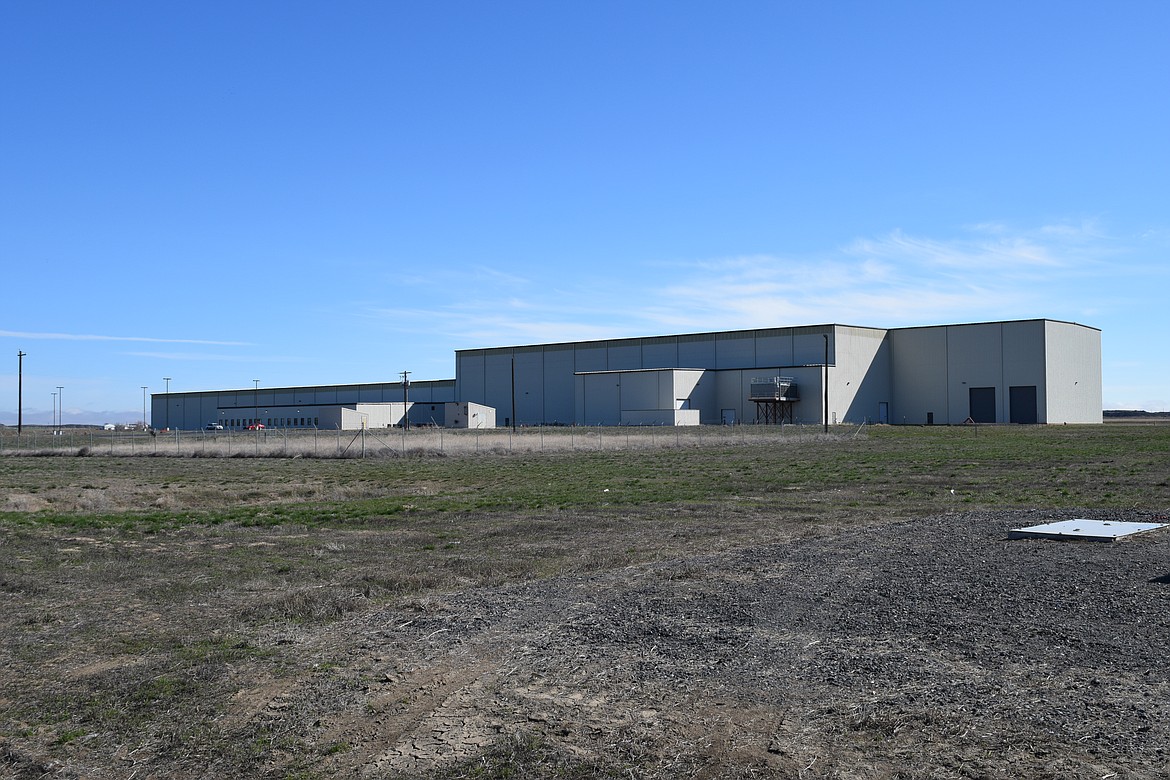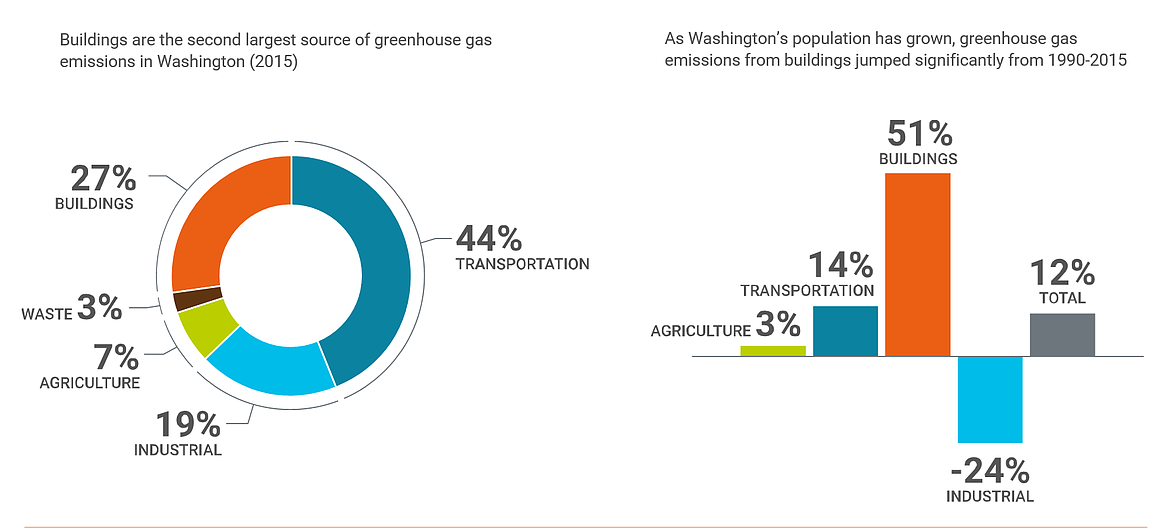Clean buildings
REDMOND — The Washington Legislature passed the Clean Building Performance Standard in 2019, and operators of commercial buildings now have set deadlines to ensure their properties 50,000 square feet and larger are in compliance with the law. While there are penalties for noncompliance, Albireo Energy’s VP and General Manager Ivan Aron says it’s also a matter of getting a return on investment.
“I think what people should be thinking about is first, let’s create the most efficient environment that we can, and then, the next step can be and should be in thinking about how can you produce your own energy,” Aron said.
The Clean Building Performance Standard, also known as House Bill 1257, was established with the goal of making Washington’s building inventory more efficient. According to the preamble of the bill, investing in more efficient buildings reduces greenhouse gas emissions, creates jobs, reduces the need to generate additional electricity and protects the environment in multiple other ways. The bill language also references data from the U.S. Department of Energy which indicates that the energy efficiency job sector has created more than 65,000 jobs, two-thirds of which are construction jobs, with that number continuing to grow. The bill’s passage is intended to encourage that sector to grow even more as businesses work to comply with the law’s requirements and take advantage of the potential benefits of operating more efficient facilities.
To realize those perks, Aron suggests getting a plan in place, not only to comply with the requirements of the law but also to establish a plan to get some return on the money companies will be putting out toward improving the efficiency of their properties.
“There’s a ton of benefits from these kinds of investments,” Aron said. “There is the path that I would recommend everybody go through an assessment of, ‘What are the things that are going to deliver me the right results?’”
Clean deadlines
That lines up with what the CBPS requirements are. An initial deadline for assessment of buildings that fall under the law — including commercial, government and office buildings — was set for Jan. 23 of this year. Aron said Albireo Energy’s clients have often gotten those assessments done, but his concern is whether they’ve taken the next step of developing a plan to meet the energy use intensity — or EUI — requirements set forth in the law.
“I’m seeing audits that have been done three years ago, two years ago, last year,” he said. “I’m really trying to get people to act. It really needs to take the next step of finding a way to create a plan based on the findings that you had, and finding a way to put those ideas into action.”
The EUI requirements of the law mean that, when the building operator takes the total energy consumed by a building, measured in the thousands of British thermal units — kBtu — or gigajoules — GJ — by the total gross floor area of the building in square feet or square meters, respectively. From there, the information is plugged into the Energy Star Portfolio Manager website (PortfolioManager.EnergyStar.gov) to calculate an EUI. According to the Washington Department of Commerce, that number must be within a certain goal identified for the type of use the building sees, whether that’s a nightclub, a manufacturing facility or an elementary school.
Navigating the process of assessment and enacting a plan may require a partner to help with the technical and logistical aspects unique to each facility, Aron said. Otherwise, they run the risk of facing penalty charges for noncompliance. The cost of such noncompliance is up to $5,000 per year in addition to a daily fine of $1 per square foot per year. For larger structures, that can be an expensive situation, making it important to follow through.
“The reason I’m saying this is because I expect there’s going to be a lot of people that, even though they started very early, they’re still going to be surprised by the deadline,” Aron said.
According to the Washington Department of Commerce’s CBPS website, there are additional reasons to get the audit and any resulting consultations done in time to comply with the law. There are a variety of exemptions available for companies whose facilities aren’t rated well through ENERGY STAR. These include buildings without occupancy permits for more than a year, financial hardships, agricultural facilities and other exemptions based on square footage and facility use.
All about ROI
Knowing a building’s specific situation through an assessment, while having an up-front cost, can save a lot of money both through possible exemptions and having an efficient plan in place to meet the EUI requirements sent for in the law, Aron said.
“Most of the people will initially be not very happy about the compliance stuff, but (once) they can start seeing the beneficial side of things, they are going to become real believers,” he said.
There are a variety of options available to ensure companies realize a return on the costs associated with making their buildings greener. Simple things like environmental controls that are set up on timers, motion-activated lighting, LED lights, updated equipment that is more energy efficient and better insulation to reduce heating and cooling costs can pay off relatively quickly. Other options include more efficient gas appliances and plumbing fixtures such as faucets and toilets that use less fuel or water, respectively.
“Those improvements can be made and they don’t necessarily have to cost a ton. They can deliver their savings within three to five, maybe seven years,” Aron said.
Using data from the EUI assessments, building operators can develop a plan that will allow them to help identify the least expensive options that will not only make them compliant with the law but can start to save them money quickly, Aron said. Having a consultant who understands energy-efficient building requirements can help with a process that may otherwise be complicated.
Albireo Energy offers the service, but the Washington State Housing Finance Commission also publishes a listing of similar companies at https://bit.ly/NRGCOWA. These companies can help assess properties and develop plans to update them to comply with the law and save their clients money.
“My recommendation is to take that look towards how you can continuously improve your business for your own bottom line benefit,” Aron said. “Specifically, when you’re talking about energy budgets (and) all the related (items), whether that’s electrical energy or natural gas or even water usage. There’s just many, many other opportunities to make sure that we have a non-wasteful, productive environment in the building.”
R. Hans “Rob” Miller may be reached at editor@columbiabasinherald.com.
Compliance deadlines:
Large buildings in Washington state, with some exceptions, must meet Energy Use Intensity Goals by deadlines established by the Washington Department of Commerce under the Clean Buildings Performance Standard as noted below.
Buildings greater than 220,000 square feet — June 1, 2026
Buildings 90,000 to 220,000 square feet — June 1, 2027
Buildings 50,000 to 90,000 square feet — June 1, 2028







